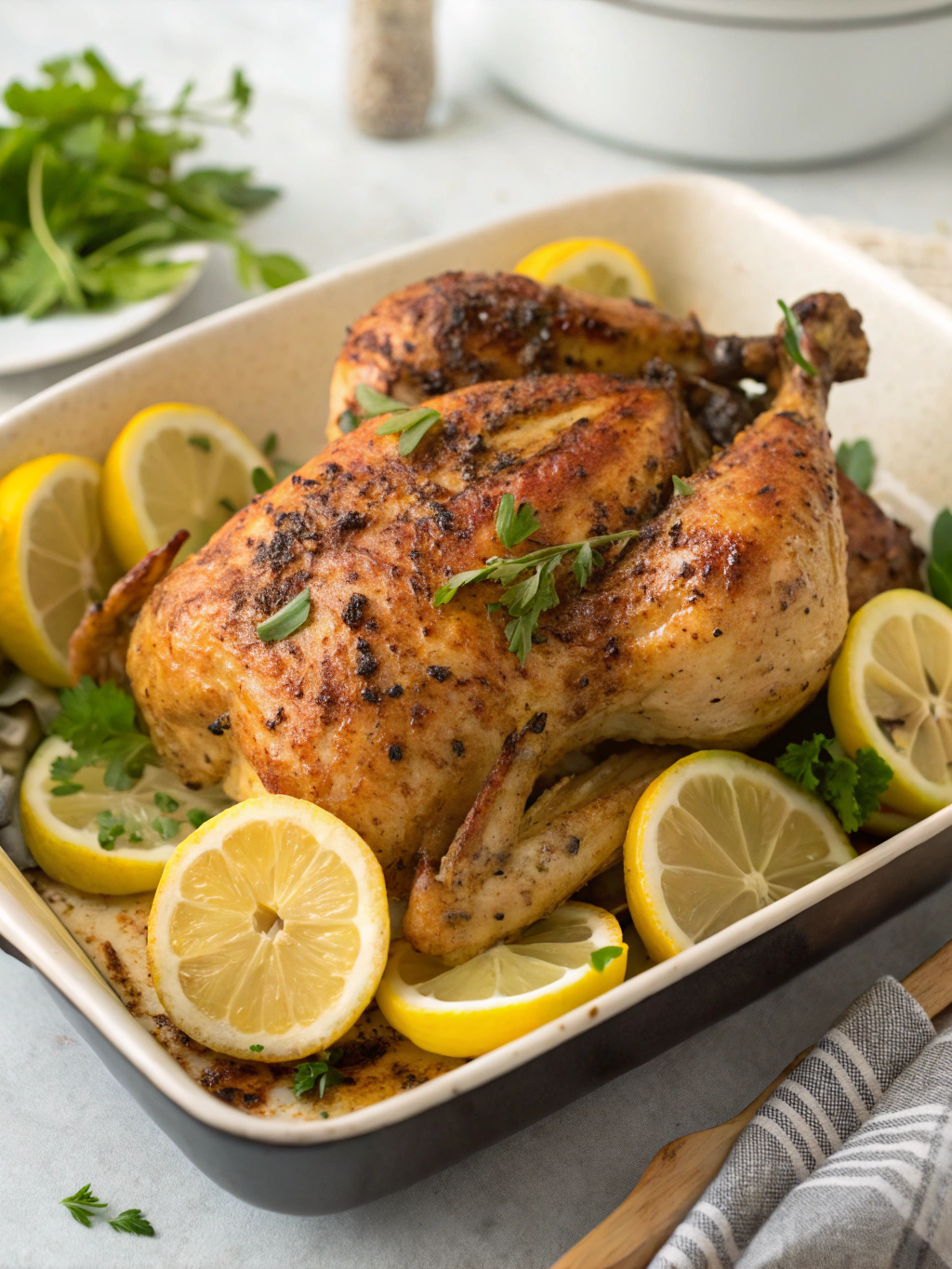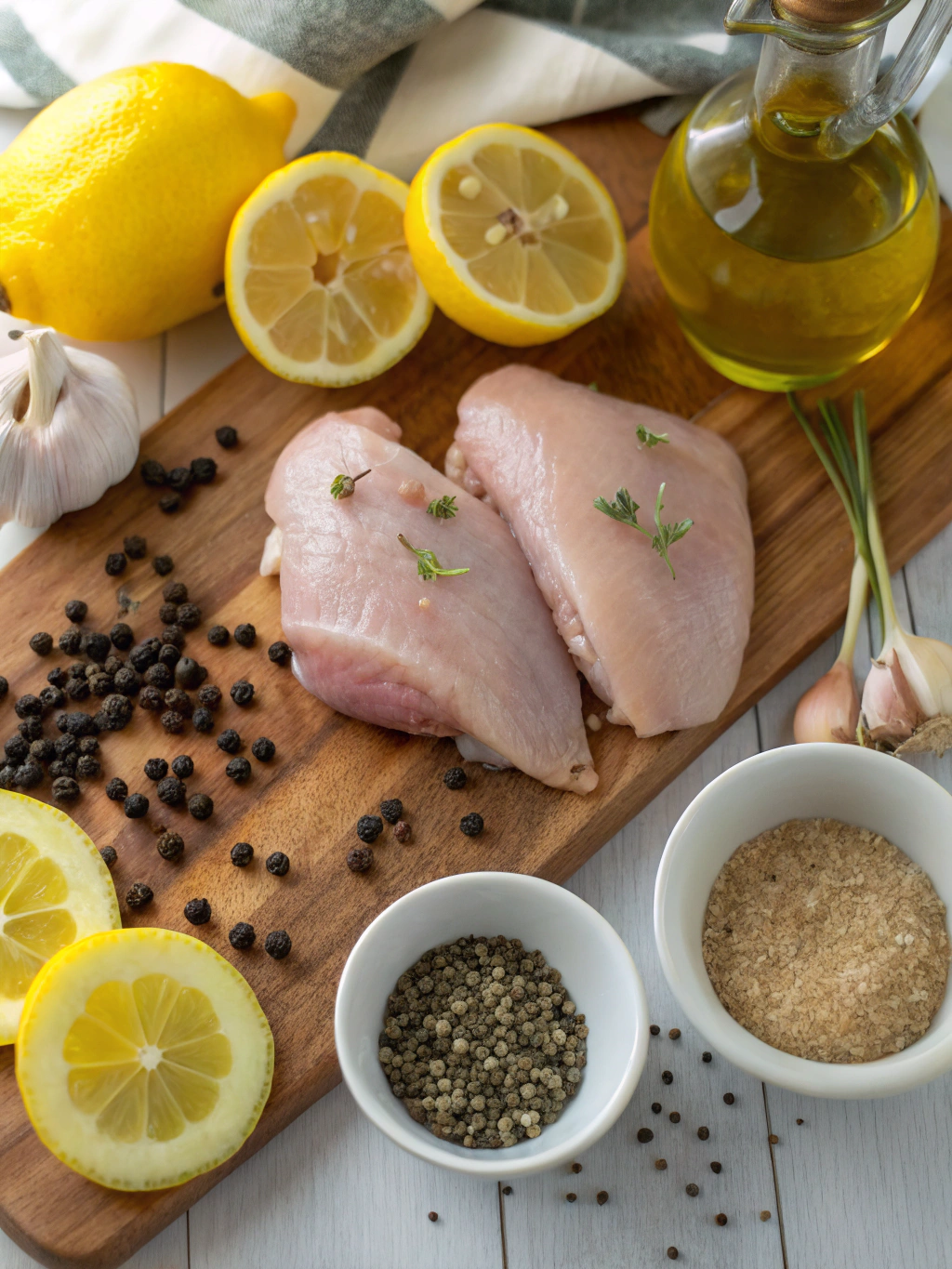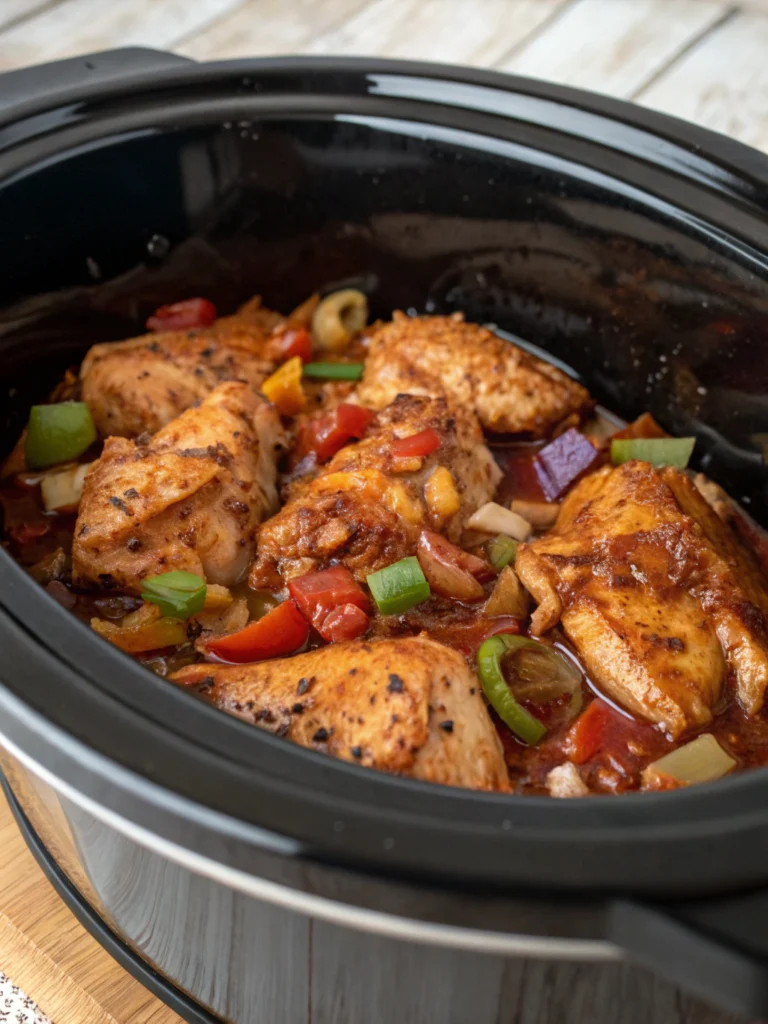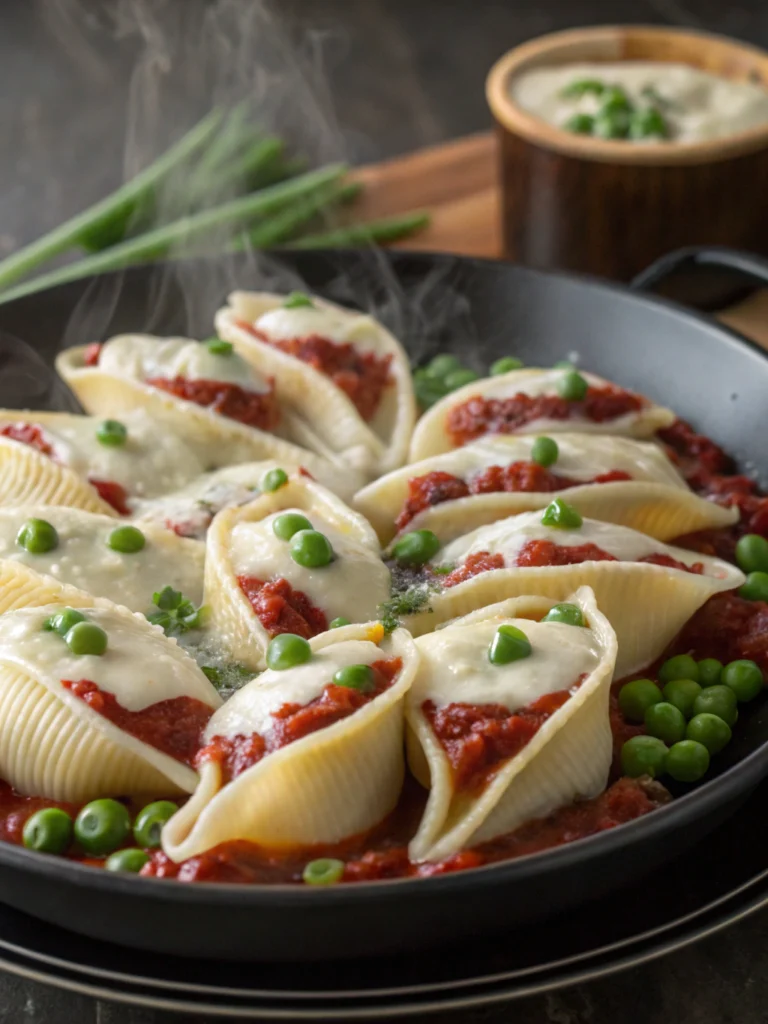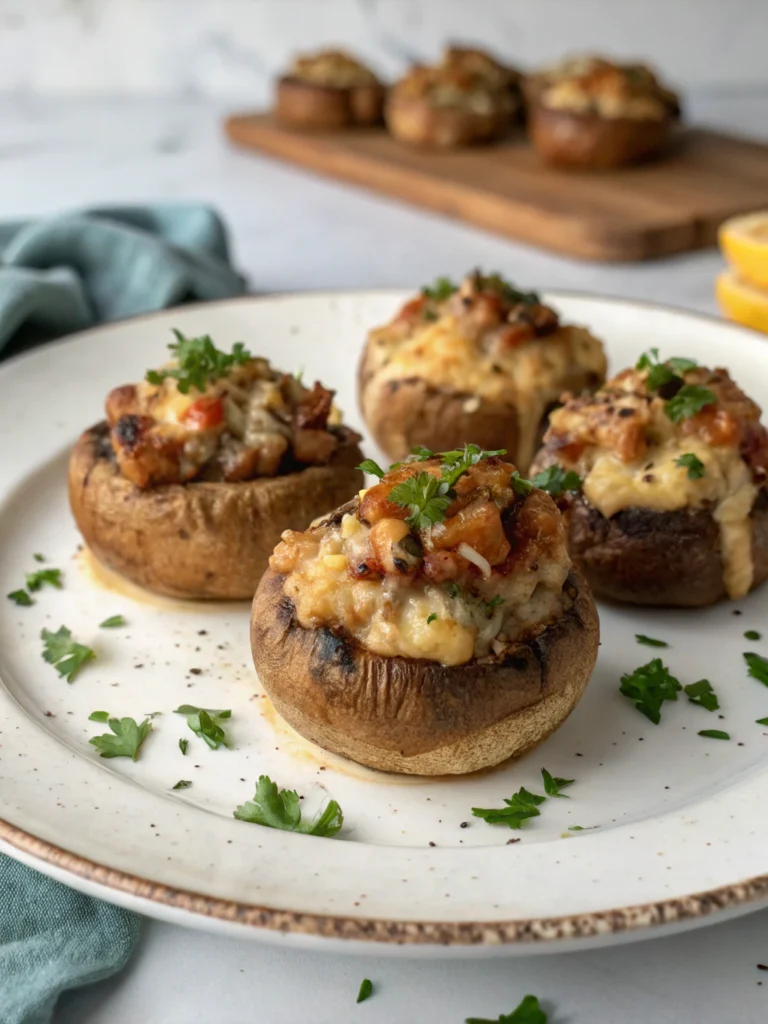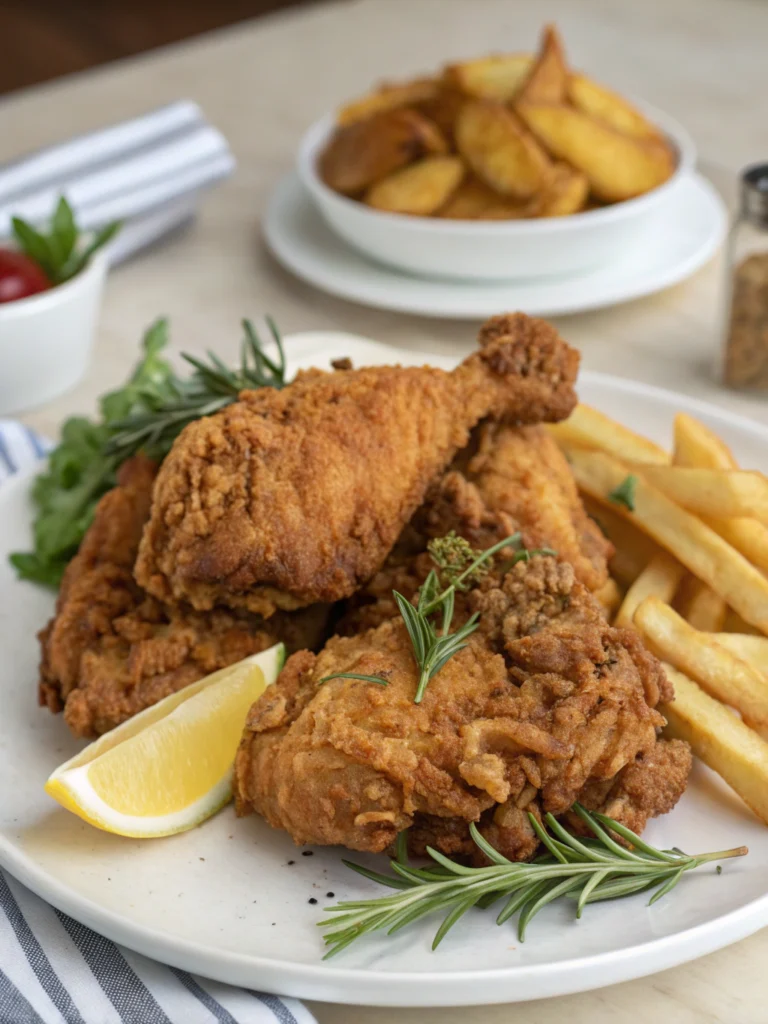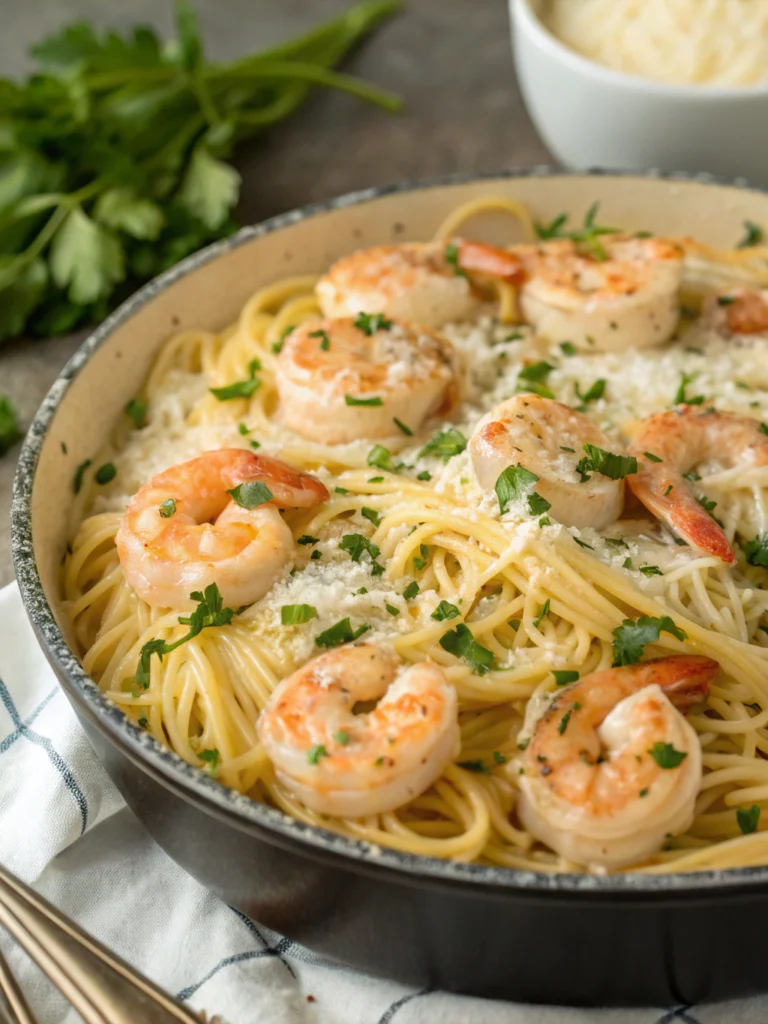Lemon Pepper Chicken
A perfectly zesty, tender chicken dish featuring bright citrus notes and bold pepper flavor. This easy weeknight dinner comes together in under 30 minutes yet tastes like it took hours to prepare.
Easy Lemon Pepper Chicken Recipe
There’s something magical about the combination of bright, tangy lemon and the bold kick of freshly cracked black pepper. When these two flavor powerhouses come together on juicy chicken, they create a dish that’s both comforting and sophisticated. This Lemon Pepper Chicken recipe has been a staple in my kitchen for years, consistently delivering restaurant-quality results with minimal effort.
Perfect for both busy weeknights and casual entertaining, this dish shines particularly bright during spring and summer when fresh citrus and herbs are at their peak. The clean, vibrant flavors pair beautifully with seasonal vegetables and make for a meal that feels light yet completely satisfying.
THIS RECIPE:
- Uses fresh lemon juice, zest, and cracked pepper for authentic flavor
- Requires just one pan for easy cleanup
- Features a foolproof technique for juicy chicken every time
- Works with any chicken cut (though thighs and breasts are our favorites)
| Recipe Details | Information |
|---|---|
| Prep Time | 10 minutes |
| Cook Time | 20 minutes |
| Total Time | 30 minutes |
| Servings | 4 people |
| Yield | 4 chicken portions |
This homemade Lemon Pepper Chicken recipe strikes the perfect balance between simplicity and flavor. With just a handful of ingredients and straightforward technique, it delivers juicy chicken with a bright, peppery crust and a silky, lemony sauce that’s good enough to drink with a spoon. Even kitchen novices can master this recipe on the first try, making it an ideal addition to anyone’s cooking repertoire.
Ingredients for Lemon Pepper Chicken
The secret to exceptional Lemon Pepper Chicken lies in the quality of your ingredients. Since this recipe features relatively few components, each one needs to shine. Opt for the freshest lemons you can find – they should feel heavy for their size and have bright, aromatic zest. Similarly, freshly cracked black pepper delivers significantly more flavor than pre-ground options.
For the Chicken:
- 4 boneless, skinless chicken breasts (about 2 pounds total)
- 2 tablespoons olive oil
- 1 teaspoon kosher salt
For the Lemon Pepper Seasoning:
- 2 tablespoons fresh lemon zest (from approximately 2 large lemons)
- 2 teaspoons freshly cracked black pepper
- 1 teaspoon garlic powder
- ½ teaspoon onion powder
- ½ teaspoon dried thyme
- ¼ teaspoon dried oregano
For the Lemon Sauce:
- 3 tablespoons butter
- 4 garlic cloves, minced
- ½ cup chicken broth
- ¼ cup fresh lemon juice
- 1 tablespoon honey
- 2 tablespoons fresh parsley, chopped
- Lemon slices for garnish
| Ingredient Category | Recommended Quantity | Quality Tips |
|---|---|---|
| Chicken | 2 pounds | Use free-range, organic if possible; ensure even thickness by pounding |
| Lemons | 2-3 large | Choose unwaxed, heavy fruits with thin skins for maximum juice |
| Black Pepper | 2 teaspoons | Freshly crack just before using for optimal aromatics |
| Herbs | As listed | Dried herbs work well, but fresh can be substituted (double quantities) |
| Chicken Broth | ½ cup | Use low-sodium to control salt levels in final dish |
Pro tip: For the most intense lemon flavor, zest your lemons directly into your seasoning mix to capture the aromatic oils. Always zest before juicing to make the process easier.
How to Make Lemon Pepper Chicken
Creating the perfect Lemon Pepper Chicken is all about balancing cooking temperatures and timing to ensure juicy meat with a flavorful crust. The process involves a simple sear-and-simmer technique that even beginner cooks can master, resulting in chicken that’s moist on the inside with a deliciously bright, peppery exterior.
Step 1: Prepare the chicken
- Pat chicken breasts dry with paper towels (this ensures better browning)
- If chicken breasts are very thick, pound them to an even ¾-inch thickness
- Season both sides of the chicken with salt
Step 2: Make the lemon pepper seasoning
- In a small bowl, combine lemon zest, black pepper, garlic powder, onion powder, dried thyme, and oregano
- Mix thoroughly to ensure even distribution of flavors
- Sprinkle the mixture evenly over both sides of the salted chicken, pressing gently to adhere
Step 3: Cook the chicken
- Heat olive oil in a large skillet over medium-high heat until shimmering
- Add the seasoned chicken breasts and cook for 5-6 minutes on the first side until golden brown
- Flip chicken and cook for another 4-5 minutes until internal temperature reaches 160°F
- Transfer chicken to a plate and tent with foil (temperature will rise to 165°F while resting)
Step 4: Make the lemon sauce
- Reduce heat to medium and add butter to the same pan
- Once melted, add minced garlic and cook for 30 seconds until fragrant
- Pour in chicken broth and lemon juice, scraping up any browned bits from the pan
- Stir in honey and bring to a simmer
- Let sauce reduce for 3-4 minutes until slightly thickened
Step 5: Finish the dish
- Return chicken to the pan, turning to coat with sauce
- Simmer for 1-2 minutes to rewarm chicken and infuse with sauce
- Sprinkle with fresh parsley
- Garnish with lemon slices before serving
Allow the chicken to rest for 5 minutes before slicing to retain juices. This resting period is crucial for ensuring the final dish is as juicy and flavorful as possible.
Tips for Making Lemon Pepper Chicken
Mastering this easy Lemon Pepper Chicken recipe is all about understanding a few key techniques that elevate the flavor and texture of the final dish. The following expert tips will help you achieve restaurant-quality results every time.
- Chicken thickness matters: Ensure even cooking by using chicken breasts of similar size or pounding them to uniform thickness
- Don’t skip the drying step: Thoroughly patting the chicken dry before seasoning promotes better browning and flavor development
- Season boldly: This dish shines when the lemon-pepper flavors really come through, so don’t be shy with your seasoning
- Watch for doneness: Chicken breasts can go from perfectly juicy to dry very quickly, so use a meat thermometer for precision
| Technique | Recommendation | Why It Matters |
|---|---|---|
| Cooking Temperature | Medium-high heat | Creates proper caramelization without burning the seasoning |
| Chicken Thickness | ¾ inch uniform | Ensures even cooking and prevents dry edges/raw centers |
| Pan Choice | Heavy-bottomed skillet | Provides even heat distribution for consistent browning |
| Sauce Consistency | Slightly thickened but still fluid | Allows sauce to coat chicken while remaining pourable for serving |
When working with the lemon sauce, remember that it will continue to thicken as it cools. If it becomes too thick, simply add a tablespoon of water or chicken broth to adjust the consistency. The goal is a silky sauce that lightly coats the back of a spoon.
For the most vibrant flavor profile, balance is key. The sauce should have a pronounced lemony brightness, a subtle black pepper kick, and just enough sweetness from the honey to round everything out. Taste and adjust as needed before returning the chicken to the pan.
Make-Ahead Instructions
This Lemon Pepper Chicken recipe works beautifully for meal prep and can be prepared in stages to simplify your cooking process. Here’s how to break it down for maximum convenience without sacrificing flavor.
You can prepare the lemon pepper seasoning mix up to one week in advance and store it in an airtight container at room temperature. In fact, allowing the lemon zest to dry slightly intensifies the lemon oil concentration, creating an even more aromatic seasoning blend.
The chicken can be seasoned up to 24 hours before cooking. Simply apply the salt and lemon pepper mixture, then store the prepared chicken breasts in a covered container in the refrigerator. This actually works as a dry brine, improving both the flavor penetration and moisture retention of the final dish.
For complete make-ahead preparation:
- Cook the chicken and sauce completely following the recipe
- Allow everything to cool for 30 minutes at room temperature
- Store the chicken and sauce together in an airtight container
- Refrigerate for up to 3 days
When ready to serve, reheat the chicken and sauce in a covered skillet over medium-low heat for 5-7 minutes, or until the chicken reaches 165°F internally. Add 1-2 tablespoons of water or chicken broth if the sauce needs thinning.
Pro tip: For the freshest flavor, add a squeeze of fresh lemon juice and a sprinkle of fresh herbs just before serving reheated Lemon Pepper Chicken.
Storing Leftovers
Properly stored Lemon Pepper Chicken makes for delicious leftovers that maintain both flavor and texture. The key is cooling the chicken correctly before refrigeration to preserve food safety and quality.
Allow cooked chicken and sauce to cool to room temperature for no more than 1 hour before transferring to storage containers. Use shallow, airtight containers to promote rapid cooling in the refrigerator and prevent bacterial growth.
Store the chicken with its sauce to maintain moisture during storage. Properly refrigerated Lemon Pepper Chicken will maintain optimal quality for 3-4 days. Check for any signs of spoilage before reheating – the chicken should smell fresh with no off-odors.
For reheating small portions, microwave on 70% power with a loose cover for 1-2 minutes, checking halfway through. For best texture, reheat larger portions in a covered skillet over medium-low heat with a tablespoon of water added to the sauce to create steam.
Food safety note: Never leave cooked chicken at room temperature for more than 2 hours (or 1 hour if the room is warmer than 90°F/32°C).
Freezing Lemon Pepper Chicken
This homemade Lemon Pepper Chicken freezes surprisingly well, making it perfect for meal preparation or preserving leftovers for future easy meals. The key to maintaining quality lies in proper cooling, wrapping, and thawing techniques.
For optimal freezer storage:
- Cool the chicken and sauce completely in the refrigerator
- Portion the chicken and sauce into meal-sized servings
- Wrap each portion tightly in plastic wrap, pressing out as much air as possible
- Place wrapped portions in freezer-safe zip-top bags or containers
- Label clearly with contents and date
- Freeze flat to promote faster freezing and easier storage
Properly wrapped and stored, Lemon Pepper Chicken can be frozen for up to 3 months without significant quality loss. Beyond this timeframe, it remains safe to eat but may develop freezer burn or flavor changes.
To thaw frozen Lemon Pepper Chicken, transfer from the freezer to the refrigerator 24 hours before needed. For quicker thawing, place the sealed container in cold water, changing the water every 30 minutes until thawed.
Reheat thawed chicken gently to prevent the texture from becoming tough. A covered skillet over medium-low heat works perfectly, allowing you to monitor the sauce consistency and adjust with a small amount of liquid if needed.
Pro tip: Freeze individual portions for quick single-serving meals. These smaller portions will thaw and reheat much faster than family-sized batches.
Serving Suggestions
Lemon Pepper Chicken’s bright, zesty flavor profile makes it incredibly versatile when it comes to creating complete meals. Whether you’re planning a casual weeknight dinner or a more elegant presentation, these serving suggestions will help you create a balanced and satisfying plate.
Perfect Pairings:
- Starches: Serve over buttered rice pilaf, creamy mashed potatoes, or alongside roasted baby potatoes with herbs
- Vegetables: Pair with steamed asparagus, roasted Brussels sprouts, or a simple arugula salad with lemon vinaigrette
- Sauces: The lemon sauce is delicious as is, but you can also offer additional sauce options like a herb-infused olive oil or light pesto for dipping
For an elegant presentation, arrange sliced Lemon Pepper Chicken over a bed of risotto or polenta, then drizzle with the sauce and garnish with fresh herbs and lemon wheels. For family-style serving, present the whole chicken breasts on a platter surrounded by roasted vegetables, with the sauce in a serving boat on the side.
Wine pairings that complement the lemon-forward flavor include crisp whites like Pinot Grigio or Sauvignon Blanc. For non-alcoholic options, sparkling water with a splash of lemon and mint makes a refreshing accompaniment.
Serve this dish at room temperature or slightly warm rather than piping hot to allow the lemon flavors to shine. The ideal serving temperature is around 140°F, which highlights both the chicken’s juiciness and the sauce’s vibrant flavors.
FAQ
Can I use chicken thighs instead of breasts for this Lemon Pepper Chicken recipe?
Absolutely! Boneless, skinless chicken thighs work beautifully in this recipe and often result in even juicier meat. The cook time will be similar, but always use a meat thermometer to confirm thighs have reached 165°F internally. The richer flavor of thighs pairs wonderfully with the bright lemon sauce.
I don’t have fresh lemons. Can I use bottled lemon juice instead?
While fresh is always best for this recipe (especially for the zest), you can substitute bottled lemon juice in a pinch. Use the same amount called for in the recipe, but boost the flavor by adding an extra ¼ teaspoon of lemon extract to the sauce. Unfortunately, there’s no good substitute for fresh lemon zest, which provides essential oils that carry much of the lemon flavor.
My sauce broke and looks curdled. How can I fix it?
A broken sauce usually happens when the heat is too high or the sauce is reduced too much. To rescue it, remove from heat immediately and whisk in 1-2 tablespoons of warm water. If that doesn’t work, strain the sauce, then gradually whisk it back into 1 tablespoon of softened butter in a clean pan over very low heat.
How can I make this Lemon Pepper Chicken spicier?
To add heat while maintaining the lemon pepper profile, add ¼-½ teaspoon of red pepper flakes to the seasoning mix. Alternatively, add a diced jalapeño when sautéing the garlic for the sauce. For a different spin, include ¼ teaspoon of cayenne pepper in the original seasoning blend.
Can I make this recipe dairy-free?
Yes! Simply substitute the butter in the sauce with olive oil or a dairy-free butter alternative. The sauce won’t be quite as rich but will still have a delicious lemon flavor. Another option is using coconut cream, which adds a subtle tropical note that works surprisingly well with the lemon and pepper flavors.

